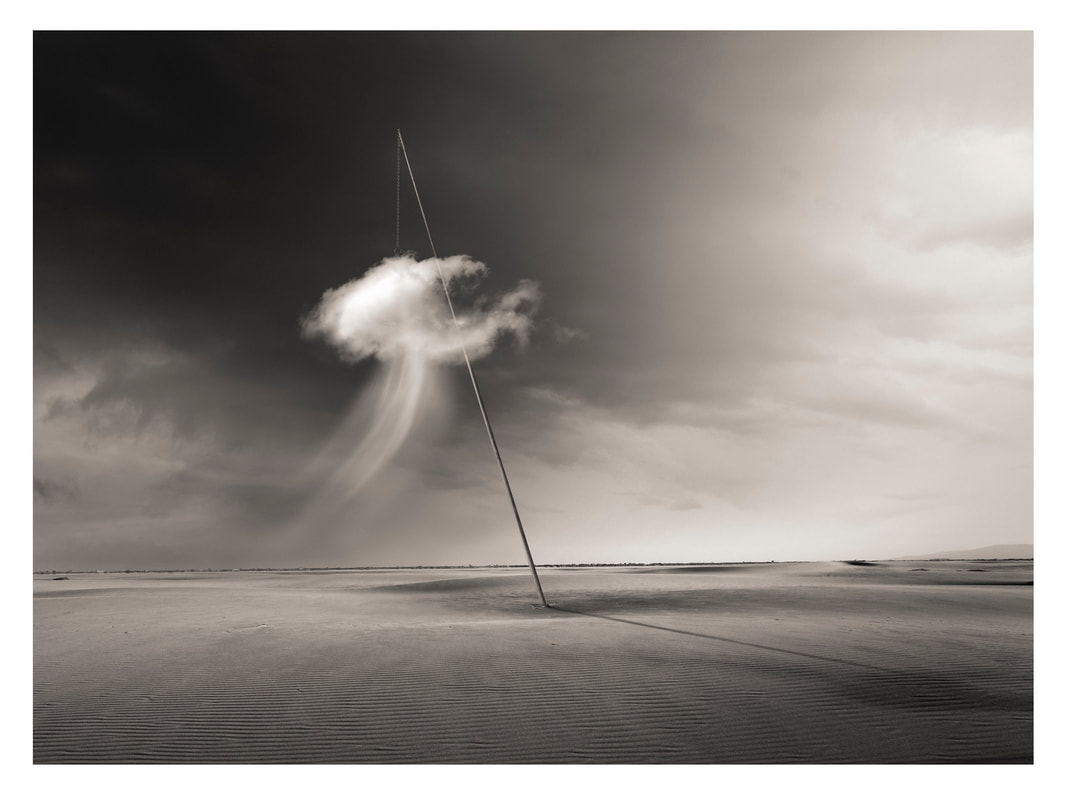|
THE ART OF ORIOL JOLONCH CAN BE QUIETLY PROVOKING. PRIMARILY USING B/W PHOTOGRAPHS, HE INCORPORATES PALE SHADES TO ILLUSTRATE DEATH.
MARIE BERTELSEN | ARTICULATE #21 | OCT 2019 The art of Oriol Jolonch can be said to be quietly provoking. Primarily using black and white photographs as a basis, he incorporates pale colors, like softly using yellow colors to illustrate dead butterflies. The artworks are usually with few objects which however carries great significance. There is a sadness or perhaps thoughtfulness in his pictures. The artwork is for the curious, the slightly odd, and whoever likes the combination of natural elements with surrealism. Whatever is in the artwork has a meaning and is there for a specific reason. It can be seen as being simple yet stylish.
The black-and-white and old-school motives give expression and air of nostalgia. This could very well be due to Jolonch’s first experiences with art being painting old cassettes and posters as a child. Thus creating art came from a very young age.
Jolonch explain himself as an artist with a want for building alternative realities created from imagination. |
Although starting out with a brush and point, photography is his preferred media combined with digital media. For him, this is specifically the contemporary surrealist photography due to it giving him an opportunity to open his imagination.
When asked about his drive and process of creating art, he describes art as being in his very core. Creating art is an impulse born within. Just like other basic needs, such as sleep, creating is vital. Jolonch’s impulsive intuitive nature makes him wish to be guided completely by intuition. However, Jolonch has rules for composition in order to create harmony. This entails specifically focusing on proportions and dimensions, which helps deriving the view of the spectator towards the most important elements. The way Jolonch creates art starts by sketching. This makes Jolonch remember the concepts and ideas, where the concept always is more important than the final form. In order to get the concept out visually, Jolonch breaks it into pieces. By sampling different images and storing it in a hard disc over many years, Jolonch can use these to make a clear idea. He explains that he instinctively knows they will fall into place, just not when, where or how.
|
Another approach Jolonch uses is taking a photograph which is later elaborated. This is where the software comes into play, which allows for editing and fine-tuning the artwork. The process of figuring out the final expression is more laborious than actually creating the art. Jolonch explains it as trying to escape a mental labyrinth, where the exit is hidden. But the moment you find the solution and exit, it brings a fantastic sensation. And since Jolonch never completely know whether the original thought will be the artwork or not, the process of creating art to him is fantastic and adventurous.
When talking about artistic influences as inspiration, he states that his list is infinite. His artistic influences go from the Italian classic renaissance painters like Tiziano (1488-1576) and Tintoretto (1518-1594) and what Clariana describes as the magic worlds of Dutch Bosch (1450-1516) up until Belgian Magritte (1898-1967). In all of these, the main theme is surrealism. In photography, inspirations are American Man Ray (1890-1976), French Dora Maar (1907-1997) and Japanese Kansuke Yamamoto (1914-1987). And within the more contemporary genre, he mentions the American duo Shana and Robert Parke Harrison (b. 1968) for their powerful visual charge of images. Finally, the Spanish Chema Madoz (b. 1958) and especially his lucidity when reinterpreting everyday objects.
This article about ORIOL JOLONCH takes part of the 5th anniversary magazine, ARTICULATE #21. Read, download or order your print version of the full publication below
|
SUPPORTARTICULATE
www.articulate.nu SUPPORT Monday - Friday 8:00 - 16:00 [email protected] +45 30 48 19 81 Head Quarters VAT DK40953191 |
|








